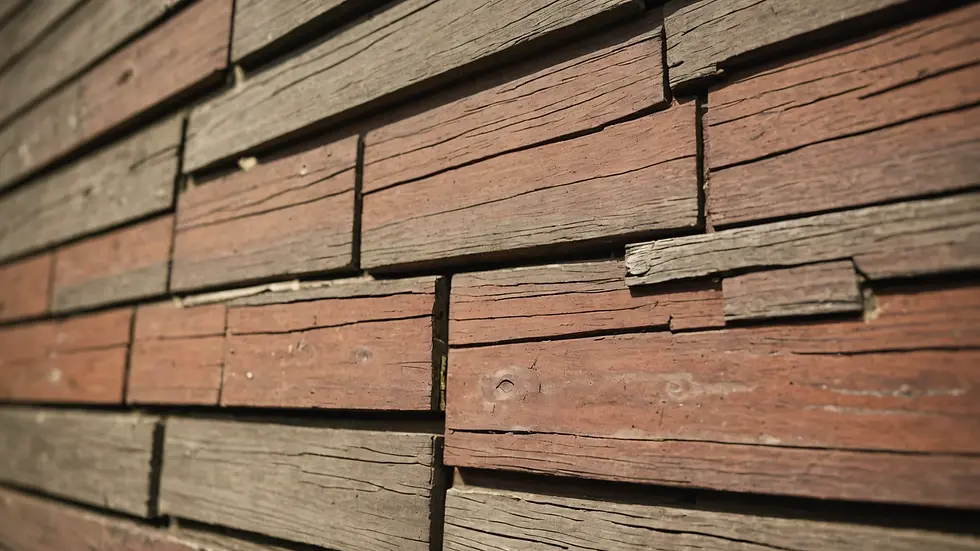Uncovering the Secrets: How to Prolong the Life of Your Home's Exterior Paint
- Joseph Burke

- Jan 22
- 4 min read
Updated: Jan 23
A fresh coat of paint can give your home a vibrant makeover while protecting it from harsh weather. However, keeping that paint looking fresh and effective can be a challenge. Factors like weather changes, pollution, and regular wear and tear can quickly take a toll. In this post, we will uncover essential tips that can help you extend the life of your home's exterior paint, ensuring it remains beautiful for years.
Understand the Weather's Impact
Weather is a significant factor affecting how long your exterior paint lasts. Different climates can have distinct effects on your paint job.
In humid areas, moisture can lead to peels and blisters; in fact, paint can lose adhesion by as much as 25% in high humidity. In dryer regions, excessive heat can cause paint to crack, with studies showing that paint can fade up to 70% faster in arid environments. Choosing paint designed for your local climate is essential. Look for high-quality, weather-resistant paint tailored for humidity or heat, which will significantly enhance durability.
Choose the Right Paint
Selecting the right paint for your exterior can have a substantial impact on its lifespan. Always opt for paint formulated specifically for outdoor use. These products resist fading, cracking, and peeling far better than interior options.
If you live in an area prone to moisture, consider a mildew-resistant paint. Quality matters too; higher-grade paints may cost more upfront, but they can last 20% to 40% longer than budget options, making them a wise investment over time.
Prepare the Surface Properly
Proper surface preparation before painting is vital. A clean and smooth surface guarantees better paint adhesion and durability.
Start by washing the exterior with soap and water to clear away dirt and mold. For more persistent grime, using a power washer can produce better results. Once cleaned, scrape off any peeling paint and sand rough areas for a smooth finish. Studies indicate that proper preparation can increase paint adherence by up to 50%, paving the way for a long-lasting application.
Apply Paint in Optimal Conditions
Timing your painting job can make a considerable difference. It's best to paint during dry, mild conditions.
Avoid painting on very hot or humid days, as these conditions can cause paint to dry too quickly, preventing proper adhesion. Overcast days are ideal since they reduce the risk of fast drying and fading from too much sun exposure. For best results, aim for temperatures between 50 and 85 degrees Fahrenheit.

Regular Inspections and Maintenance
Routine inspections of your home's exterior can help catch small issues before they balloon into larger problems. Look for signs of wear, such as discoloration, peeling, or cracking.
If you spot any concerns, address them quickly. Touching up small areas can prevent larger, costlier repairs down the road. Regular maintenance can add years to your paint job, preserving both aesthetics and functionality.
Clean the Exterior Periodically
Dirt and debris can accumulate on your home over time, leading to a dull appearance and cutting the lifespan of your paint.
Schedule a cleaning every six months. Use a garden hose to rinse off dirt, and a soft brush for stubborn stains. This easy task can significantly maintain the vibrancy of your exterior paint, as dirty surfaces can promote paint failure and create a dull visual.
Invest in Quality Primer
Using a high-quality primer can enhance the durability of your paint. Primers create a uniform surface for your topcoat, improving adhesion and coverage.
Select a primer that matches the type of material on your home's exterior, whether it's wood, stucco, or brick. Effective primer application can improve paint adhesion by up to 55%, preventing moisture problems while enhancing the colors.
Protect High-Traffic Areas
Some areas of your home, like doorways and railings, experience more wear due to foot traffic or exposure to elements.
In these high-traffic spots, consider applying extra layers of paint or protective coatings. This extra measure helps guard against chips and scratches, ensuring your paint job lasts longer in these vulnerable areas.

Opt for a Paint with UV Protection
Sunlight can lead to fading and deterioration of your paint, especially on south and west-facing walls.
When choosing paint, look for products with UV protection. Such paints help reflect damaging rays, significantly reducing fading and potentially extending the lifespan of your exterior paint by up to 30%.
Consider Exterior Coatings
In addition to high-quality paint, think about adding a protective topcoat. These coatings create a barrier against moisture and UV rays, providing extra durability.
Many exterior coatings also offer benefits like scratch resistance and improved ease of cleaning. This added layer of protection can greatly enhance the longevity of your home's exterior paint.
Wrapping Up
Taking care of your home's exterior paint is vital for both aesthetics and property value. By understanding the effects of weather, selecting suitable paint, and committing to regular maintenance, you can ensure your paint job remains beautiful and strong over time. Follow these tips, and you will keep your home looking fresh and vibrant while protecting your investment for years to come. Invest the effort now for a paint job that withstands the elements and the passage of time.




Comments